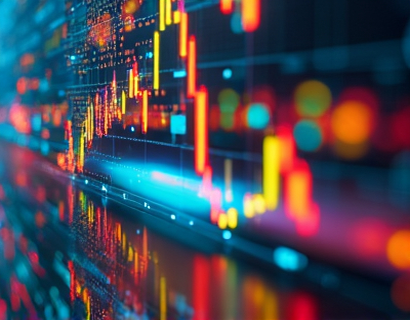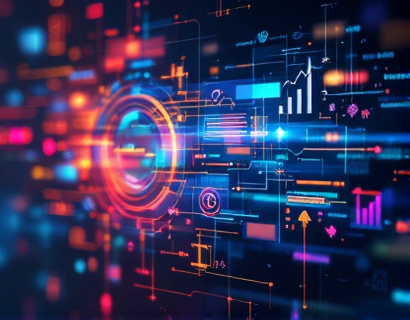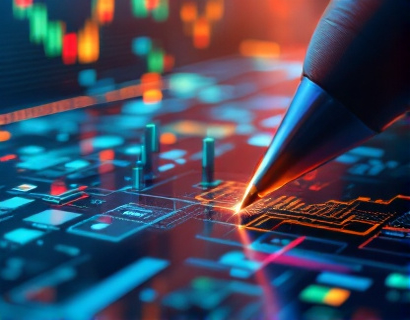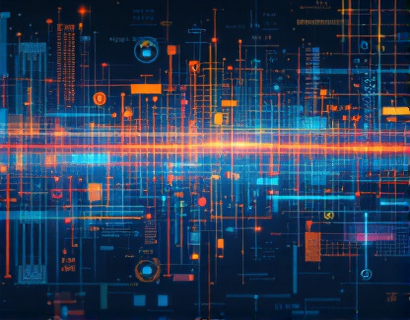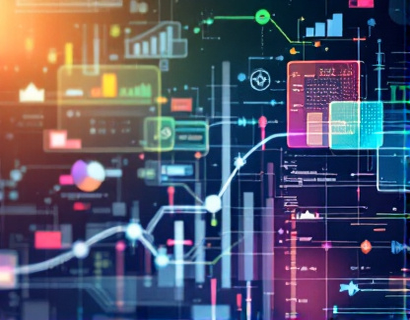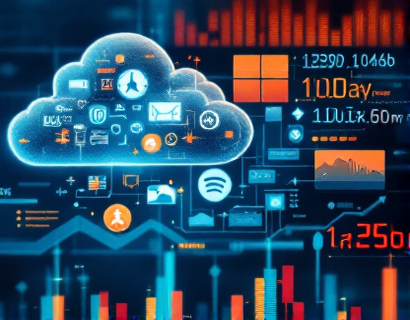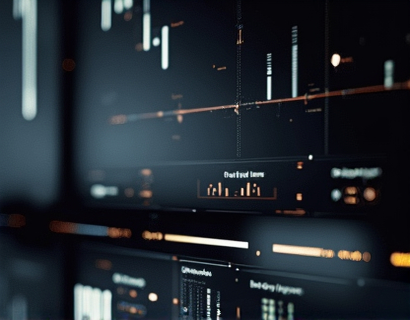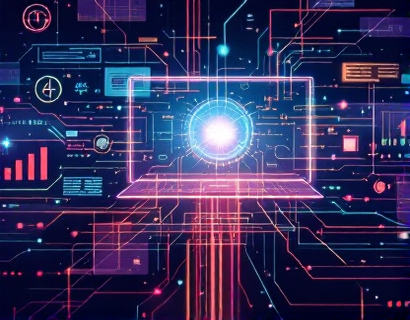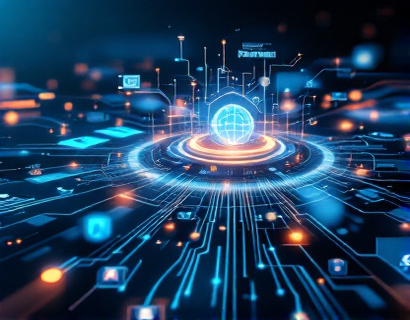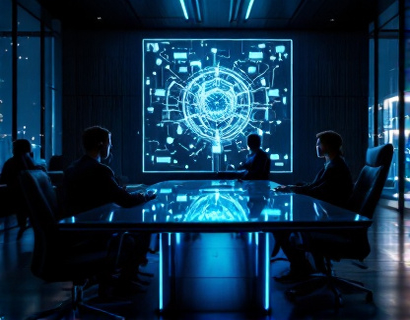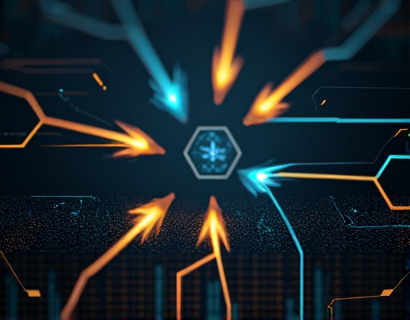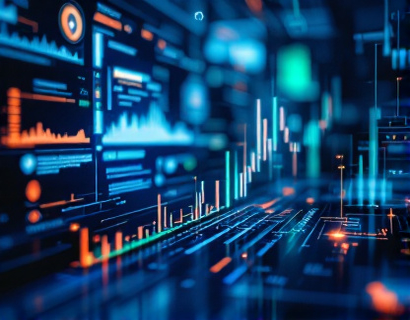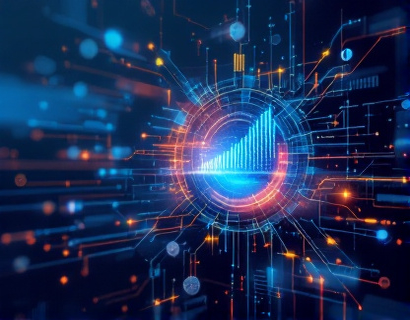Blockchain for Art: Revolutionizing the Preservation and Tracking of Historical Artifacts with Decentralized Solutions
In recent years, blockchain technology has emerged as a transformative force across various industries, and the art world is no exception. This decentralized ledger system offers a secure, transparent, and immutable way to track the authenticity and provenance of historical artifacts and artworks. By leveraging blockchain, the art sector can ensure secure ownership, foster trust among collectors, museums, and cultural institutions, and ultimately preserve our shared cultural heritage more effectively.
The traditional methods of verifying the authenticity and provenance of artworks are often cumbersome, prone to errors, and susceptible to fraud. This is where blockchain technology steps in, providing a robust solution to these challenges. By recording each transaction and ownership change on a blockchain, a permanent and tamper-proof record is created, accessible to all stakeholders involved. This not only enhances the reliability of the information but also streamlines the process of verifying an artwork's history and legitimacy.
One of the key benefits of using blockchain in the art world is the enhancement of trust. Collectors and institutions can have confidence in the authenticity of the artworks they purchase or hold, knowing that the information is verifiable and immutable. This trust is crucial for the art market, as it encourages more transactions and investments, thereby supporting the preservation and appreciation of art.
Blockchain technology also plays a vital role in the preservation of historical artifacts. By creating a decentralized and distributed ledger, the risk of data loss or manipulation is significantly reduced. Each artifact can be assigned a unique digital identity, linked to its physical counterpart, ensuring that its history and condition are accurately documented and maintained over time. This level of detail and security is invaluable for cultural heritage institutions tasked with the long-term preservation of artifacts.
For museums, the integration of blockchain can revolutionize how they manage their collections. Traditional inventory systems are often siloed and lack interoperability, making it difficult to track the movement of artifacts across institutions. Blockchain provides a unified platform where museums can record and share data seamlessly, enhancing collaboration and improving the overall management of cultural assets.
Art enthusiasts and collectors stand to benefit greatly from blockchain as well. The transparency and security offered by the technology allow collectors to verify the provenance of their purchases with ease. This not only adds value to their collections but also protects them from potential fraud. Moreover, blockchain can facilitate more direct and efficient transactions, reducing the need for intermediaries and lowering costs.
The application of blockchain in the art world extends beyond mere tracking and verification. It also opens up new possibilities for digital art and NFTs (Non-Fungible Tokens). These digital assets can be uniquely identified and owned, with their ownership and transaction history recorded on the blockchain. This has led to a new market for digital art, where creators and collectors can securely buy, sell, and trade unique digital pieces.
However, the adoption of blockchain in the art sector is not without its challenges. One of the primary concerns is the technical complexity and the need for education. Many stakeholders in the art world may not be familiar with blockchain technology, making it essential to provide comprehensive training and resources to facilitate its adoption. Additionally, the scalability and interoperability of blockchain platforms need to be addressed to ensure that they can handle the volume of transactions in the art market.
Another challenge is the regulatory landscape. The art market operates under various legal frameworks, and the introduction of blockchain technology must align with these regulations. Ensuring compliance with data protection laws, intellectual property rights, and other legal considerations is crucial for the successful implementation of blockchain solutions in the art world.
Despite these challenges, the potential benefits of blockchain in the art sector are substantial. By providing a secure, transparent, and efficient way to manage and verify artworks, blockchain can help preserve cultural heritage for future generations. It can also foster a more trustworthy and dynamic art market, benefiting all participants, from artists and collectors to museums and cultural institutions.
To illustrate the practical applications of blockchain in the art world, consider the example of a digital platform designed to track and verify the provenance of historical artifacts. Such a platform would allow users to input detailed information about an artifact, including its creation date, materials used, previous owners, and any relevant historical events. This data would then be encrypted and added to the blockchain, creating an immutable record.
Each time the artifact changes hands, the new owner would update the blockchain with the transaction details, including the date, price, and any other pertinent information. This continuous updating ensures that the artifact's complete history is always available and verifiable. For instance, if a painting is sold from a private collection to a museum, the transaction would be recorded on the blockchain, providing a clear and transparent account of its ownership history.
This level of transparency is particularly valuable for artifacts with complex or disputed provenance. In cases where the history of an artifact is unclear or contested, blockchain can provide an objective and tamper-proof record, helping to resolve disputes and establish authenticity. This is especially important for artifacts that have been looted or illegally exported, as the blockchain can help trace their origins and ensure they are returned to their rightful owners or institutions.
Furthermore, blockchain can enhance the process of authentication for artworks. Traditional methods often rely on expert opinions and physical examinations, which can be subjective and prone to error. By integrating blockchain with advanced technologies such as AI and IoT, the authentication process can become more objective and reliable. For example, sensors embedded in an artwork can continuously monitor its condition and environment, with this data being recorded on the blockchain. This ensures that any changes or damages are documented in real-time, providing a comprehensive record of the artwork's state over time.
The use of smart contracts on the blockchain can also streamline various aspects of the art market. Smart contracts are self-executing contracts with the terms of the agreement directly written into code. In the context of art transactions, smart contracts can automate processes such as payment, transfer of ownership, and compliance with legal requirements. This not only reduces the need for intermediaries but also minimizes the risk of errors or fraud.
For instance, a smart contract can be programmed to release payment to the seller only after the buyer confirms receipt and verification of the artwork's authenticity. Once all conditions are met, the contract executes the payment automatically, ensuring a secure and efficient transaction. This level of automation can significantly reduce the time and cost associated with art transactions, making the market more accessible and efficient.
In addition to transactional benefits, blockchain can also support the conservation and restoration of artworks. By maintaining a detailed and immutable record of an artwork's history, conservators and restorers can access valuable information about the materials and techniques used in its creation. This knowledge is crucial for developing appropriate conservation methods and ensuring the long-term preservation of the artwork.
Moreover, blockchain can facilitate collaboration among conservators, researchers, and institutions by providing a shared platform for data exchange and analysis. This collaborative approach can lead to new insights and innovations in the field of art conservation, further enhancing the preservation of cultural heritage.
As the art world continues to embrace blockchain technology, it is essential to consider the broader implications for cultural heritage management. Blockchain not only provides tools for tracking and verifying artworks but also fosters a culture of transparency and accountability. This shift can lead to more ethical practices in the art market, reducing the incidence of fraud and illicit trade.
For cultural heritage institutions, blockchain can serve as a powerful tool for engaging the public and educating them about the importance of preserving historical artifacts. By making provenance data accessible and transparent, institutions can build trust with their audiences and encourage greater participation in preservation efforts. This democratization of information can help foster a broader appreciation and support for cultural heritage.
In conclusion, blockchain technology offers a transformative solution for the art world, addressing key challenges related to authenticity, provenance, and ownership. By providing a secure, transparent, and decentralized platform for tracking and verifying artworks, blockchain can enhance trust, streamline processes, and ultimately contribute to the preservation of our shared cultural heritage. As the technology continues to evolve, its integration into the art sector will likely become increasingly prevalent, paving the way for a more secure and sustainable future for art and cultural artifacts.



